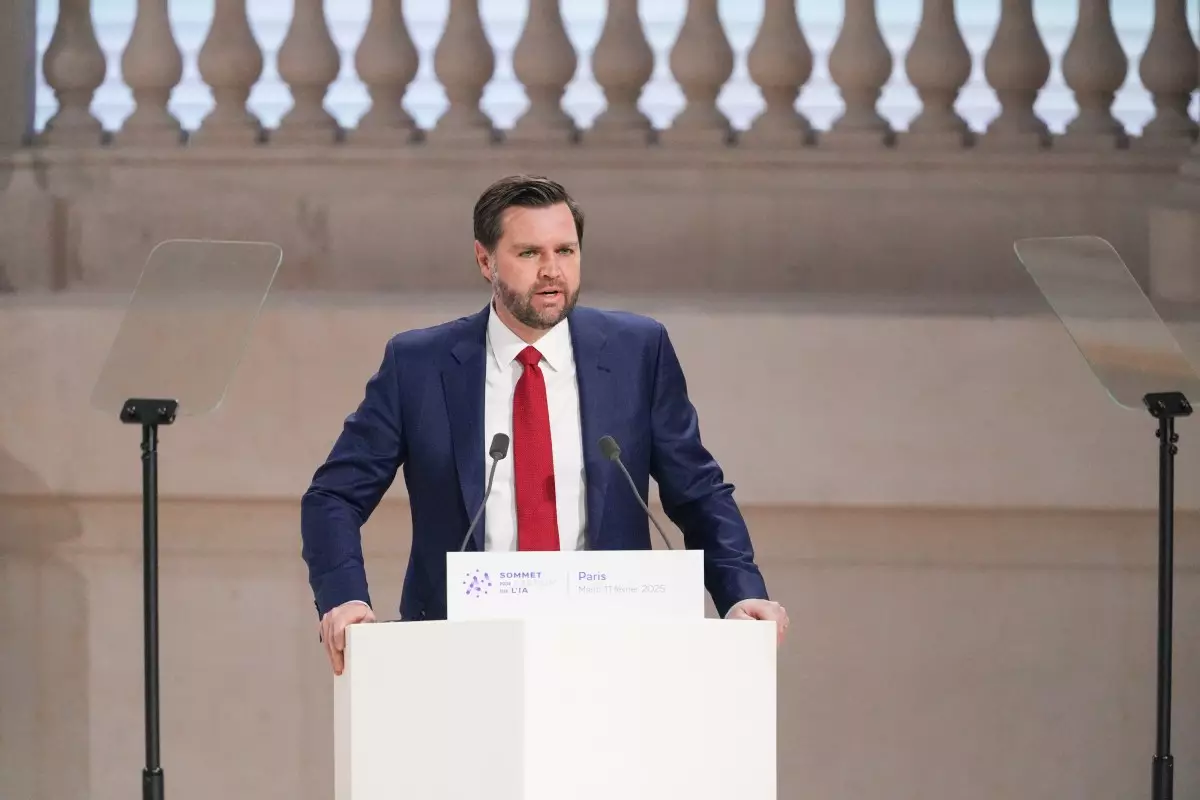In a world where artificial intelligence (AI) is rapidly evolving, the ongoing discourse surrounding its regulation is becoming increasingly multifaceted. At the recent AI Action Summit in Paris, the absence of a definitive consensus was palpable, as the U.S. notably refrained from endorsing the statement outlining proposed resolutions. Delivered by Vice President J.D. Vance, his address underscored a distinctive approach towards AI, focusing on opportunities rather than the safety-oriented perspectives that previously prevailed in discussions about technology governance.
From the outset of his speech, Vice President Vance emanated a sense of confidence regarding the U.S.’s role in the global AI landscape. He asserted that the United States will not only maintain its status as a leader in AI technology but will do so without imposing excessive regulation that could stifle innovation. By implying that the Trump administration anticipates a “pro-growth” approach to AI, Vance evoked a vision where the U.S. strategically positions itself as the “gold standard” for AI technologies globally, a position he framed as beneficial for both individuals and businesses alike.
However, while asserting this dominance, Vance’s rhetoric indicated a reluctance to engage thoroughly with the existing regulatory measures, particularly those emerging from the European Union (EU). He appeared to sidestep the notion of collaboration on regulatory frameworks, offering instead an invitation for other nations to follow the U.S. model, which prioritizes innovation over caution. This stance raises pertinent questions about the interplay between leadership and accountability in the burgeoning field of AI.
A key facet of Vance’s address was his deliberate pivot from discussions rooted in AI safety—often a focal point at previous summits—to an emphasis on the opportunities that AI presents. By stating, “I’m not here…to talk about AI safety,” he signaled a strategic pivot towards narratives that champion progress over caution. This reframing could be seen as an effort to inspire stakeholders to embrace technological advancements without the encumbrance of regulatory fear. However, this inclination toward a more risk-tolerant approach must be examined critically.
Vance outlined four primary areas of focus for the U.S. AI action plan. Among these were commitments to uphold the global leadership of American technology and to avoid what he termed “excessive” regulation that could hinder growth. Yet, Vance’s assertion that regulation could “kill” AI innovation raises critical concerns about the potential ramifications of a deregulated environment. The challenge lies in finding a balance—encouraging innovation while safeguarding against the risks associated with unchecked technological advancement.
Further along in his address, Vance touched on two critical concerns surrounding AI: bias and labor. He articulated a strong opposition to the use of AI for “authoritarian censorship,” advocating for technology that empowers rather than silences. This perspective coincides with a growing awareness of the ethical implications of AI, particularly in how algorithms may perpetuate bias and discrimination, potentially amplifying societal inequalities.
Additionally, the Vice President discussed economic considerations, framing AI as a vital driver of job creation. The claim that the Trump administration would sustain a “pro-worker growth path for AI” reflects a growing recognition of the duality of AI—it has the potential to both displace and create jobs, presenting a challenge for workforce adaptation and policy development. The complexities inherent in this duality require thoughtful exploration and nuanced policy solutions, rather than broad-brushed assertions of opportunity and growth.
Despite Vance’s appealing narrative of progress without regulatory constraints, his commentary inadvertently echoed sentiments voiced by European leaders, such as EU Commission President Ursula von der Leyen. She emphasized the importance of establishing unified safety standards across Europe to foster public confidence in AI technologies. Her acknowledgment of the need to streamline regulations while ensuring safety demonstrates that there exists a path where innovation and accountability can coexist—an idea seemingly at odds with Vance’s rhetoric.
Given the intricate web of interests and challenges surrounding AI governance, Vance’s vision invites skepticism. The reality of implementing policies that foster innovation while addressing social and economic ramifications is far more complex than high-level speeches often suggest. Without a clear, actionable framework, the risk is that exciting prospects of AI progress will be overshadowed by the very issues the technology has the potential to exacerbate.
As the discussions surrounding AI evolve, it is clear that the path forward will require engagement from various stakeholders, a willingness to collaborate internationally, and a balanced approach to regulation. With competing priorities at play, the future of AI governance will hinge upon navigating these complexities without losing sight of ethical considerations. Ultimately, the dialogue sparked at the Paris Summit must continue beyond the stage, fostering a cooperative environment dedicated to shaping a responsible and inclusive AI landscape that benefits society as a whole.

